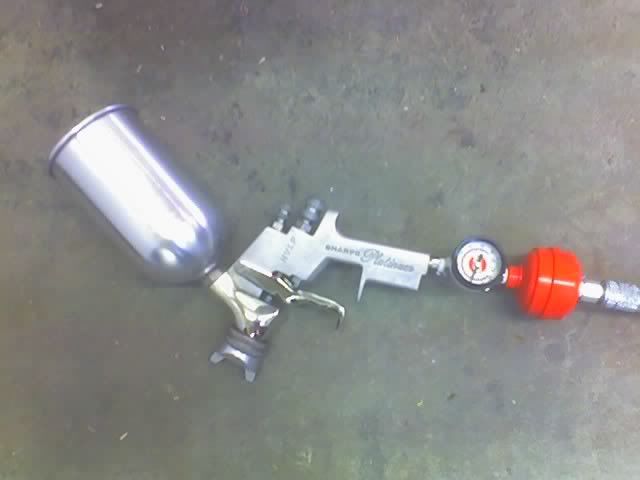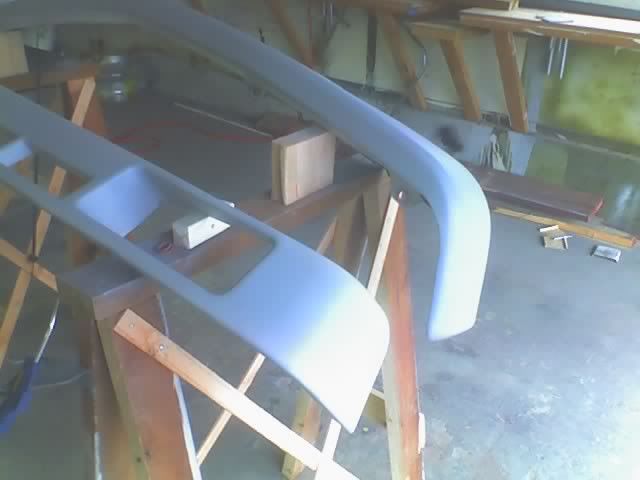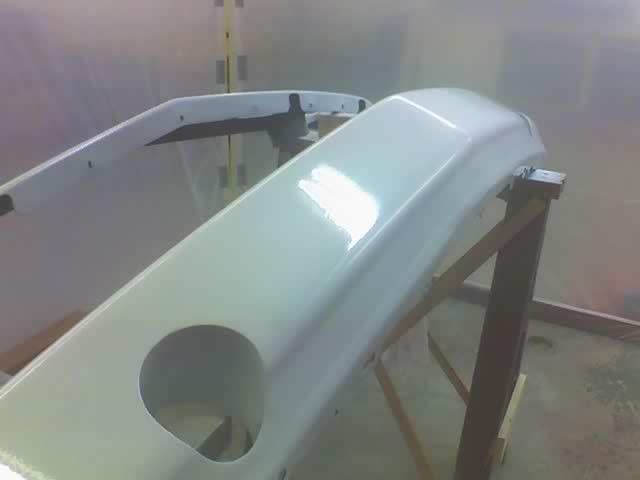The last time that I shot base-coat/clear-coat I was about 12" to 14" from the work surface, but this can vary a bit. I used a PPG product, with a medium hardener/catalizer that activates between 65 to 75 degrees farenheit for the clear coat. Both the base and clear were about the same viscosity, so the spray pattern/distance from work surface to gun was about the same for both.
The primer is easy to shoot in comparison to the base-clear coats. It as well as the base coat are reduced with a "reducer" or "thinner" from the like company of your paint products. The clear is reduced with the activater only, and there is a specific ratio for mixing, this is where measuring is critical. Both the primer and paints/clears should be reduced according to the manufacturers specs.
Typically, horizontal strokes are normal (left to right and back) on vertical surfaces, although it could vary if you are in a precarious area painting......say a bumper opening or areas where there are panels meeting (i.e. door edges, trunk edges, the hood, etc.) You should paint parallel to those edges for even coverage. Paint tends to gather more on edges because you hit them as you cover both adjoining surfaces, so tacking them first is a good idea. (a light pass before covering adjacent panels)
Here's an example of PPG base/clear coat:
My gun setup, a Sharpe Platinum HVLP (high volume/low pressure):

Bumper and valance in primer:

Base-coat and clear coat applied:

The primer is easy to shoot in comparison to the base-clear coats. It as well as the base coat are reduced with a "reducer" or "thinner" from the like company of your paint products. The clear is reduced with the activater only, and there is a specific ratio for mixing, this is where measuring is critical. Both the primer and paints/clears should be reduced according to the manufacturers specs.
Typically, horizontal strokes are normal (left to right and back) on vertical surfaces, although it could vary if you are in a precarious area painting......say a bumper opening or areas where there are panels meeting (i.e. door edges, trunk edges, the hood, etc.) You should paint parallel to those edges for even coverage. Paint tends to gather more on edges because you hit them as you cover both adjoining surfaces, so tacking them first is a good idea. (a light pass before covering adjacent panels)
Here's an example of PPG base/clear coat:
My gun setup, a Sharpe Platinum HVLP (high volume/low pressure):

Bumper and valance in primer:

Base-coat and clear coat applied:












Comment